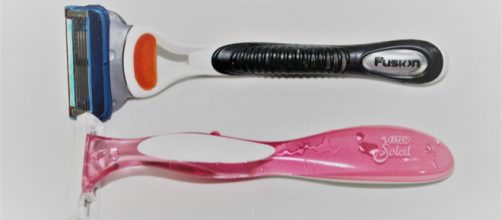Tax Day is looming in the upcoming month of April. While Tax Day typically refers to W2’s and documents, income and more, there’s another form of tax that’s more subtle but still prudent to discuss: the Pink Tax.
In simple terms, the Pink Tax is the name for an unfair premium which ties into the price tag of female-specific items. The same products, marketed to different genders, might have different prices. A new study by company Promo Codes For You shows that, on average, women pay more than $453.87 than men on the “essentials” such as shampoo, razors, and even basic clothing items.
Other studies report finding similar information about the Pink Tax. In 2012, the New York City Department of Consumer Affairs compared 800 products with clear gender marketing. Their study focused on more than 90 brands in New York. Said study had a feminist-frustrating takeaway: women pay more in 42 percent of the cases examined. Even toys marketed toward girls cost 11 percent more.
Do pink labels cost more?
Marketers are relatively notorious for charging extra for irrelevant features. All anyone must do to see this is to look at Apple products and their marketing. They focus on making the customer feel like the product is worth what they’re paying through extensive applications, ease of use, and neat features.
By focusing on what sets them apart from the rest of the market in their industry, Apple has developed a die-hard fanbase. Some will say that purchasing an Apple product is buying into the marketing strategy, and it is. Here’s another example of the Pink Tax at Walgreens, thanks to ConsumerReports.org. Excedrin Extra Strength costs less than Excedrin Complete Menstrual at this drugstore.
Apparently, a pink label means an item can cost more. But where does the fault for this tax lie? Though there are claims that the government supports the Pink Tax by unequally taxing sneakers (for example), the blame likely lies with the consumer. Yet, we live in a country with a market economy and the point of a market economy is that we make choices.
Our choices, surely, affect the pricing structure of goods and services because an item or service is only worth what people are willing to pay.
With that being said, it’s reasonable to focus on another “Tax." The Tampon Tax is a reality, where women pay extra for feminine hygiene products and sanitary items when other items which aren’t essential are exempt. States that tax tampons also tax toilet paper which seems like an essential item instead of a luxury, really.
Paid less and expected to spend more
Women are paid less, at $0.77 per hour to that of their male counterpart’s $1.00. Women are paid less, and their essentials cost more, meaning that they’re expected to spend more. That sounds like women are being expected to spend more money, simply because they’re women.
In theory, prices are dictated by the retailers themselves. This is, in part, true. However, prices will only be as high as people are willing to pay. And unfortunately, women have been conditioned by society to be far more likely to spend money on personal care items, clothes, and other services than men. Do we, as women, value products marketed toward women more because we translate price to value? The fact remains that we are consumers in a market economy. We decide what price we’ll pay. If we continue to perpetuate this cycle, we’re only hurting women.
With a solid, concerted effort to change the habits of our contemporary consumption, we may be able to impact the Pink Tax. Enough is enough. The gender pricing disparity (or the Pink Tax) and gender inequality must both be repealed and replaced.


